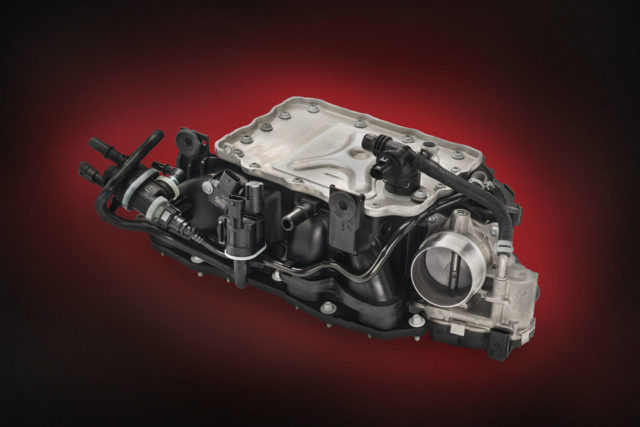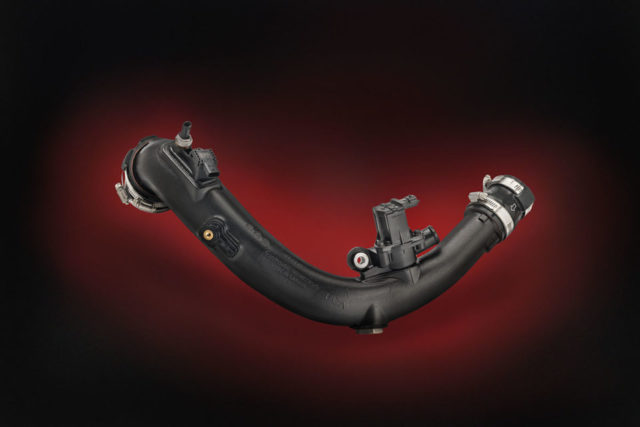Though some people aren’t too keen on the idea of turbochargers in everything from a $500,000 Ford GT to a lowly Hyundai Veloster, the state of the environment and the powers that be are making the normally-aspirated engine a thing of the past. The salient fact is, for better or worse, turbochargers are here to stay, since commuter cars and performance rockets alike will use forced induction for the advertised sake of fuel economy. In fact, by 2020, it’s predicted that 60% of light vehicles will use turbochargers for fuel gains.
Though these hairdryers save at the pump, they come with their own set of problems: namely dulled throttle response, a muted exhaust note, and a marked increase in engine bay temperature. It’s well-known that turbochargers produce incredible amounts of heat, and with the incentive to make city cars and family sedans alike more tightly packaged, there are some serious logistical issues designers must contend with.
 [1]
[1]The new Ultramid line of plastics will debut on the Alfa Romeo Guilia, as seen with its intake manifold here. Photo credit: BASF
When the red-hot turbocharger assembly is mounted in an engine bay which does not spare any plastic, it’ll take some very clever packaging or a newer, more resilient form of plastic to keep the engine bay from resembling a G.I. Joe melted under the magnifying glass of a pyromaniac teenager. To compensate for the increase in engine bay temperatures created by turbocharging, BASF has developed a new form of heat-resistant plastic to debut on the Alfa Romeo Giulia [2] with the 2.0L GME engine.
According to BASF [3]‘s press release, “The Ultramid Endure portfolio can be used in many air induction applications of the turbocharged system, including the air intake manifold, charge-air ducts, resonators, intercooler end caps and throttle bodies.” To test Ultramid Endure’s resistance to heat aging, BASF subjected the components to temperatures of 200-220° C for 3,000-5,000 hours. To improve resistance to heat-aging, BASF developed an innovative stabilization technology to protect the material from oxygen attack on the polymer surface. The Ultramid Endure plastics will be resistant to 220° C over the long haul, and can withstand temperatures as high as 240° C (464° F)!
The new Endure lineup was developed in conjunction with other big names. For instance, the 2.0 GME’s charge air cooler—made in conjunction with Magnetti-Marelli—will use their new D3G7 resin, which shows great resistance from acid condensate in the exhaust gasses. Additionally, BASF developed a new form of glass-fiber resin in conjunction with ABC Group Inc. for the Giulia’s hot-side turbocharger duct. With infared welding parameters used to achieve strong welds, the durability of the turbocharger duct was improved significantly. Anne Bueschkens, CEO of ABC Group, notes, “The part requires weld connections and our engineers worked closely with BASF’s material and joining experts to understand the unique requirements, allowing us to fine tune our infrared welding technology, assuring success of the welding process for this demanding high temperature duct.”
With the anticipated industry shift towards downsizing and turbocharging, BASF intends to stay ahead of the curve with innovative technologies that will push reliability, economy, and performance. For that reason, the new 2.0-liter Giulia is one that enthusiasts should keep an eye out for.
